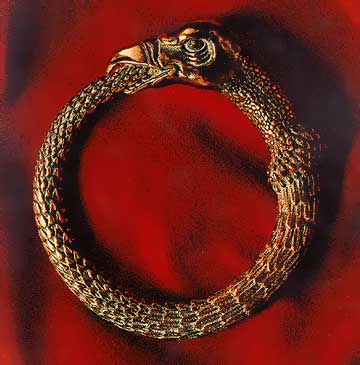

2331 St. Claude Ave and Spain, New Orleans, LA 70117 • 504-710-4506 • Tues-Sat 11am-5pm • Directions
• UPCOMING
• PAST EXHIBITIONS
• FEATURED ARTISTS
• HISTORY OF BARRISTER'S
• ST. CLAUDE COLLECTIVE :
AN EXHIBIT FOR PROSPECT.1
• THINGS OF INTEREST
• HERBERT SINGLETON
• ROY FERDINAND
• AFRICAN
• HAITIAN
• ANTIQUITY UNVEILED
2331 St. Claude Ave & Spain
New Orleans, LA 70117 504-710-4506
Tues-Sat 11am-5pm
Directions
Contact
(augmented and re-worked)
Socrates Scholasticas
by Andy P. Antippas
I have things to say: I am Socrates Scholasticas and I lived and wrote in the City of Constantine, most actively, in the midst of your Fourth century, when, at the Council of Nicea, in 325 Your Years, the doctrines, creeds, and the spurious history of Christianity was being invented by self-seeking priesthoods, by Bishop Eusebius, by Euthalius, and especially by my Emperor, Constantine, now the governor of the Eastern and the Western empire He decided to face the growing political and military chaos by fusing together the principle god saviors and reconcile the warring priesthoods: the Heseus of the Druid barbarian Germanic tribes who ranged across the North, the Isles of Britain, Gaul and Iberia, and the Krishna, called Kristos, by the Greeks, Romans, and throughout the old Empire of Alexander. This newest “savior” was then imagined to have existed at the time of the Herods and biographies for him were compiled from the lives and activities of others. Of course, there were no records kept of the Council’s activities.
I was astonished by these events—it seemed as if they thought we scholars had misplaced all our books or forgot everything we ever learned at the feet of our illustrious teachers. Heseus was Ies, the One Fire, the Sun god brought to the North by Phoenician tin traders. Krishna, another Sun personification, we have known about from the days before Pythagoras, and then again when Alexander sent Hindu manuscripts to his teacher, and then definitively, when Apollonius, the Cappadocian, brought to us many of the older texts from his visits to the Gynosophists. I have Hindu colleagues here in Constantine’s city and they are vastly amused to see their cowherd made into a carpenter. All of these gods, it is still well known, were associated with Aries the Lamb when he crosses the equinoctial line at the vernal equinox, thus redeeming the world from the desolation and death of Winter. And are not this “Savior’s” 12 apostles our 12 Olympians which, in turn, are the signs of the Babylonian zodiac?
The Council priests have also established mind-strangling rituals and ceremonies to celebrate this new Aries. Their Eucharist is borrowed from the Eleusinian mysteries honoring Ceres wherein her wheat bread-body along with the grape wine-blood of Dionysus was share among the initiates. Their center piece, the “savior’s” crucifixion, is copied from our playwright’s story of Prometheus, himself crucified on a Scythian crag for his devotion to mankind. Now we Greeks made up Gods to explain the movements of the heavenly bodies. First, we had huge snakes, bulls , and centaurs; but when the childhood of our race was over, we re-made them like all humanity, but worse: vengeful, capricious, and unethical. However, when we became men, we abandoned them for Reason and Philosophy and left the silly Olympians for literature and for the unsophisticated. But as preposterous as our imaginative inventions were, we were at least scrupulous enough to fabricate their ancestors back to Chaos. But not so these Kristo worshippers: I have read the Council’s mangled and confused holy texts—their New Testament—four different versions of the life of their god-savior, Hesus Kristos. It is no wonder then that they could not get their savior’s pedigree straight: one genealogy, in Matthew’s recollections, has 29 generations, while in Luke’s version there are 44 generations—all going back to some base, fornicating, lute- playing, murdering Jewish warlord named David. The virgin birth they contrived has familiar tropes and is picturesque, especially the appearance of the three Caldean astrologers at his birth, but no one quite figures out what to do with his father, Joseph, who just disappears. Is it possible that the untold tale involved Hesus murdering his father and marrying his mother? Is Mary the Great Mother sorrowing for her son Attis? Or is she Ishta searching for her Shepherd Tammuz? Or possibly Isis aching to resurrect Osiris? Their tales have the stink of the Euphrates and Nile Valleys. The rest of the savior’s family is a bit confused by the virgin birth as well: was Hesus the youngest or oldest of his brothers— and were there sisters or not? And even worse, the moral platitudes their savior utters...I fear that a theatrical performance of these texts before an Athenian audience would have been condemned and the authors stoned. In the old days, we Greeks believed, as Achilles reminded Priam, that for every blessing the gods give, they give two sorrows. But as we have come into our more thoughtful maturity, we no longer blame any gods or planets for our fate; Man is the measure and master of all things.
Return to Main Page © Copyright 2000-2009 Barrister's Gallery and Dr. Andy P. Antippas For information send email to aantippas@aol.com